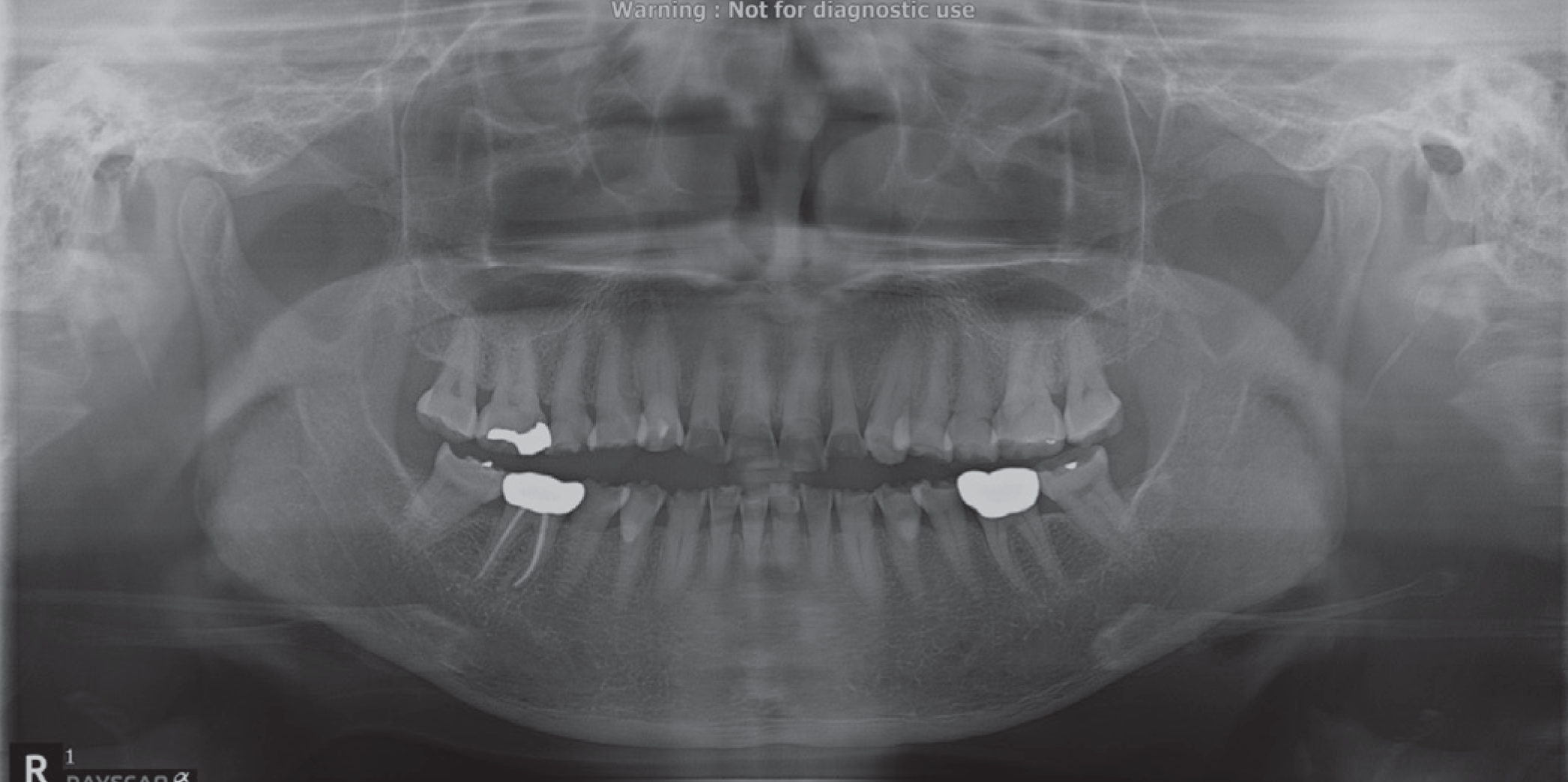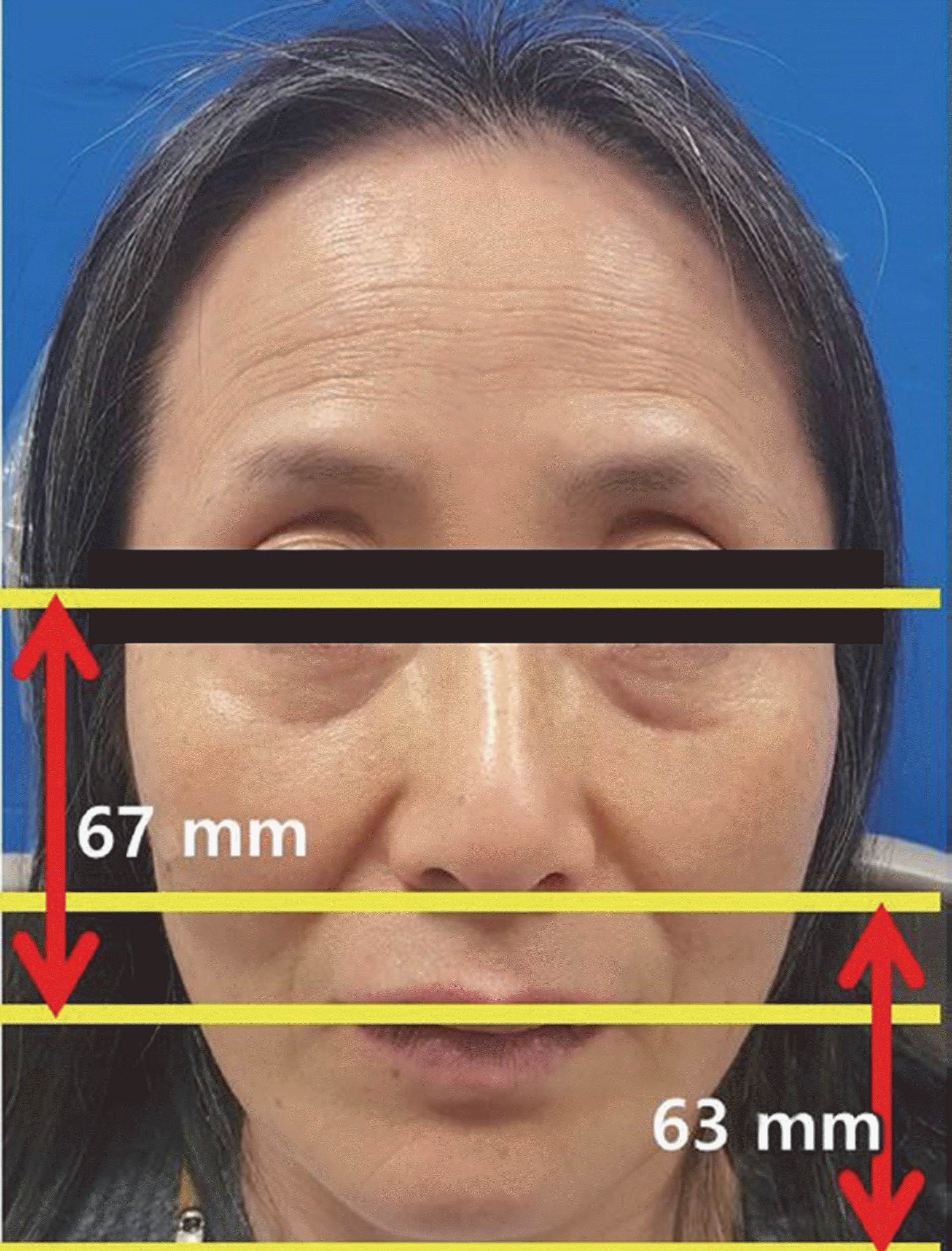Abstract
Extensive dental erosion and wear will cause serious loss of function and aesthetics in the mouth. In order to recover this condition, careful analysis of the patient's bite relationship is required. In particular, a treatment plan should be established considering the possibility of reproduction of the vertical dimension and centric relation, and appropriateness of the occlusal plane and anterior guidance. Also, the choice of prosthetic materials is an important consideration in patients with severe wear. In this case, patients with overall wear and erosion on tooth was established anterior guidance by orthodontic treatment and fully restored with monolithic zirconia, without increasing vertical dimension. (J Korean Acad Prosthodont 2018;56:360-7)
Go to : 
REFERENCES
1.Jaeggi T., Grüninger A., Lussi A. Restorative therapy of erosion. Lussi A, editor. Dental erosion: from diagnosis to therapy. New York: Karger;2006. p. 200–14.

2.Grippo JO., Simring M., Coleman TA. Abfraction, abrasion, biocorrosion, and the enigma of noncarious cervical lesions: a 20-year perspective. J Esthet Restor Dent. 2012. 24:10–23.

3.Johansson A., Haraldson T., Omar R., Kiliaridis S., Carlsson GE. A system for assessing the severity and progression of occlusal tooth wear. J Oral Rehabil. 1993. 20:125–31.

4.Turner KA., Missirlian DM. Restoration of the extremely worn dentition. J Prosthet Dent. 1984. 52:467–74.

5.Park JH., Jeong CM., Jeon YC., Lim JS. A study on the occlusal plane and the vertical dimension in Korean adults with natural dentition. J Korean Acad Prosthodont. 2005. 43:41–51.
6.Johnson A., Wildgoose DG., Wood DJ. The determination of freeway space using two different methods. J Oral Rehabil. 2002. 29:1010–3.

7.Willis FM. Features of the face involved in full denture prosthesis. Dent Cosmos. 1935. 77:851–4.
8.Gegauff AG. Effect of crown lengthening and ferrule placement on static load failure of cemented cast post-cores and crowns. J Prosthet Dent. 2000. 84:169–79.

9.Kim DS., Kim YJ., Choi JH., Han JH. A study of Korean norm about tooth size and ratio in Korean adults with normal occlusion. Korean J Orthod. 2001. 31:505–515.
11.Attin T., Koidl U., Buchalla W., Schaller HG., Kielbassa AM., Hellwig E. Correlation of microhardness and wear in differently eroded bovine dental enamel. Arch Oral Biol. 1997. 42:243–50.

13.Dawson PE. Functional occlusion: from TMJ to smile design. 1st ed.St. Louis; MO: Mosby;2007. p. 113–30.
14.Abduo J., Lyons K. Clinical considerations for increasing occlusal vertical dimension: a review. Aust Dent J. 2012. 57:2–10.

15.D'Amico A. Functional occlusion of the natural teeth of man. J Prosthet Dent. 1961. 11:899–915.
16.Kruger L., Michel F. A single neuron analysis of buccal cavity representation in the sensory trigeminal complex of the cat. Arch Oral Biol. 1962. 7:491–503.

17.Guazzato M., Albakry M., Ringer SP., Swain MV. Strength, fracture toughness and microstructure of a selection of all-ceramic materials. Part II. Zirconia-based dental ceramics. Dent Mater. 2004. 20:449–56.

18.Vichi A., Louca C., Corciolani G., Ferrari M. Color related to ceramic and zirconia restorations: a review. Dent Mater. 2011. 27:97–108.

Go to : 
 | Fig. 1.Intraoral photograph before treatment. (A) Upper, (B) Right, (C) Frontal, (D) Left, (E) Lower. |
 | Fig. 6.Orthodontic allignment. (A) Before orthodontic treatment, (B) After orthodontic treatment. |
 | Fig. 7.Intraoral photographs of provisional restoration. (A) Upper, (B) Right, (C) Frontal, (D) Left, (E) Lower. |




 PDF
PDF ePub
ePub Citation
Citation Print
Print









 XML Download
XML Download